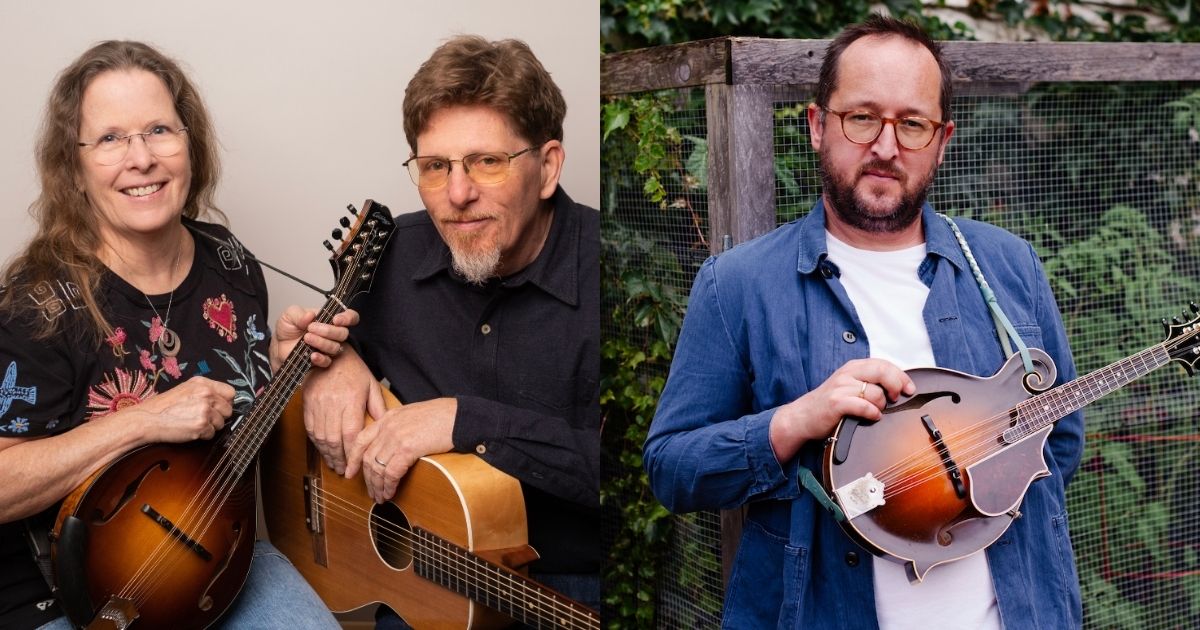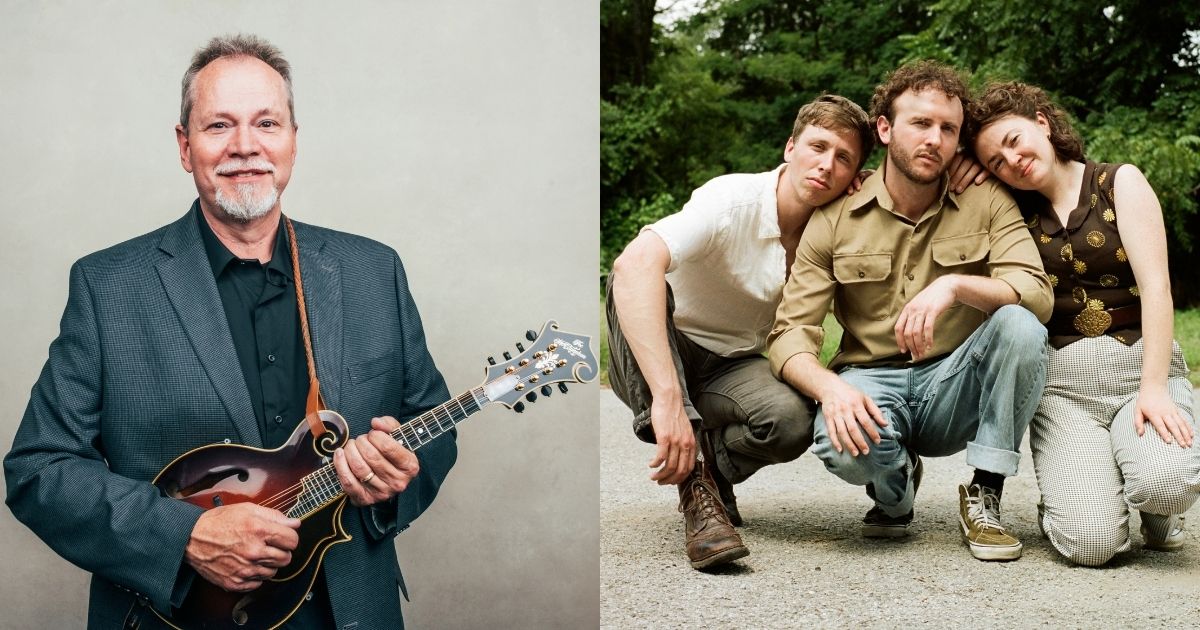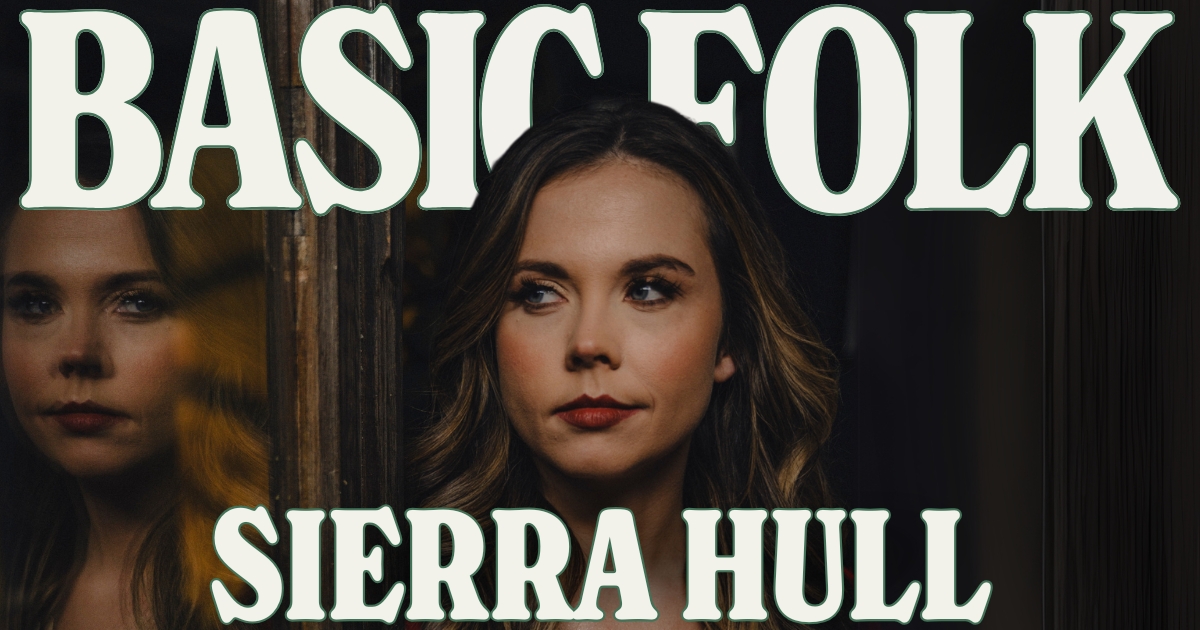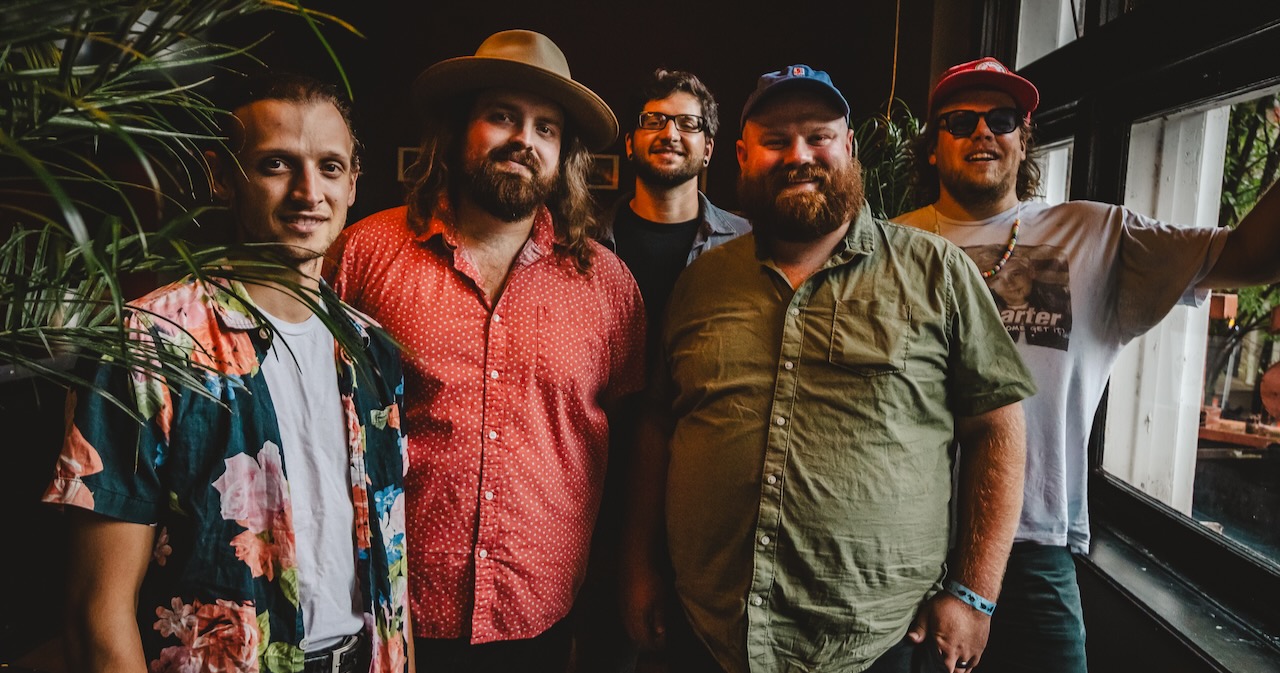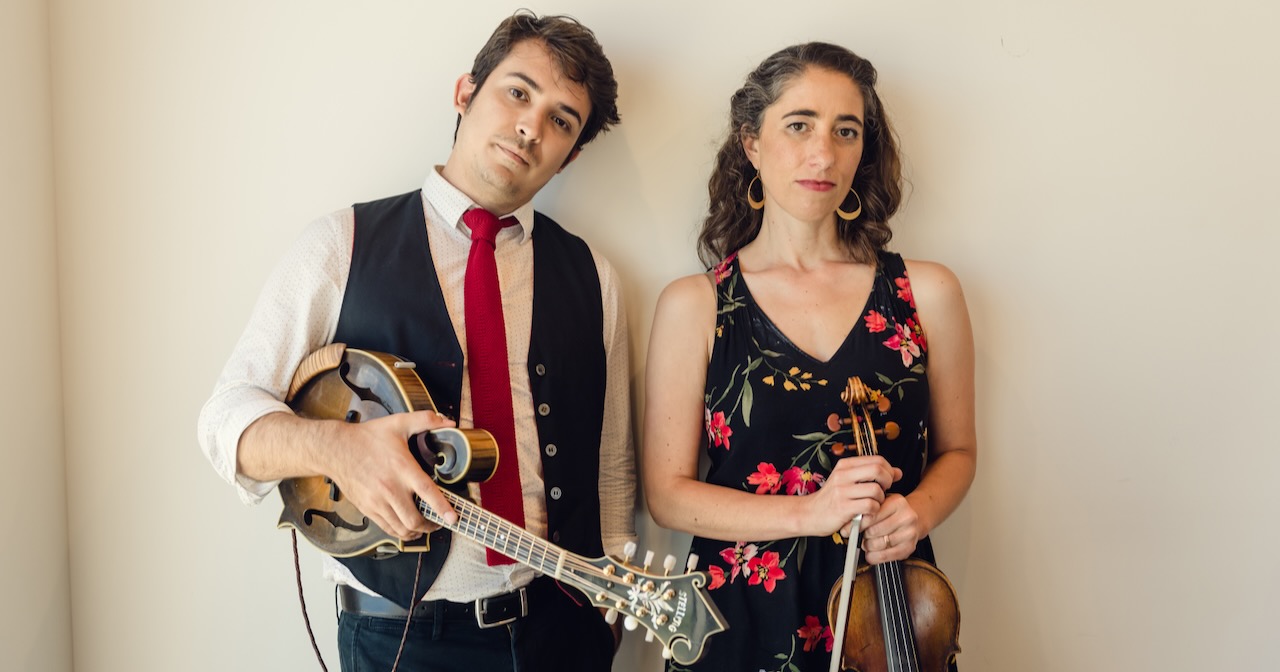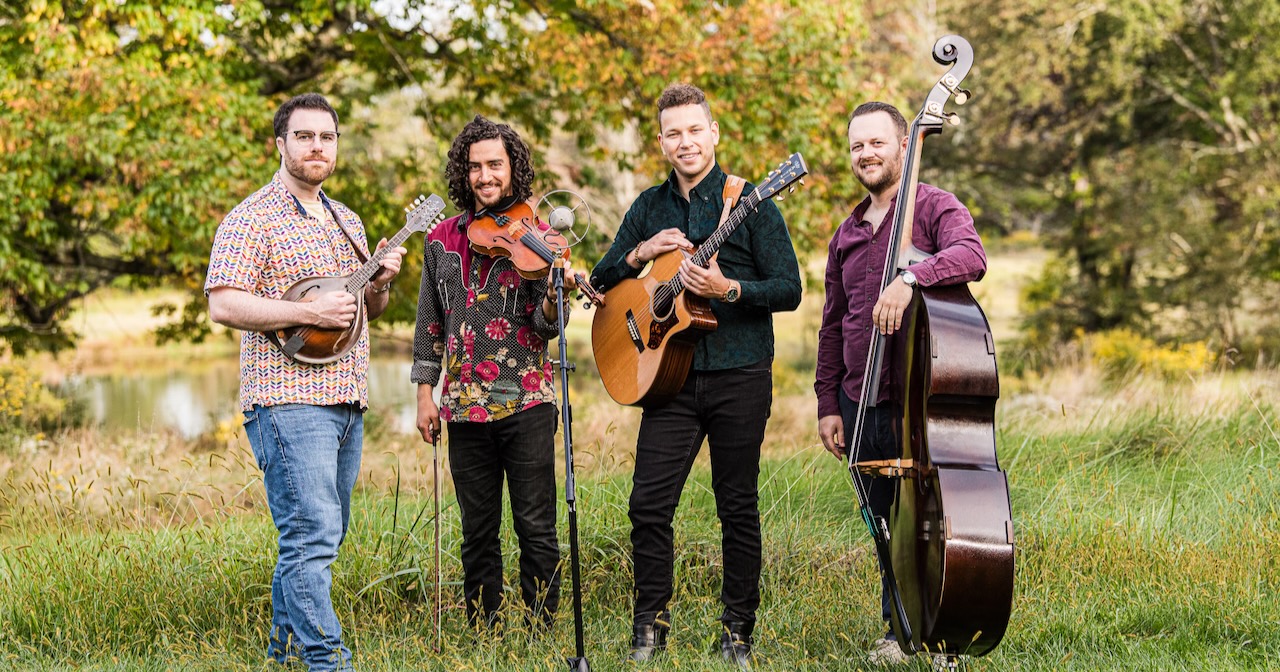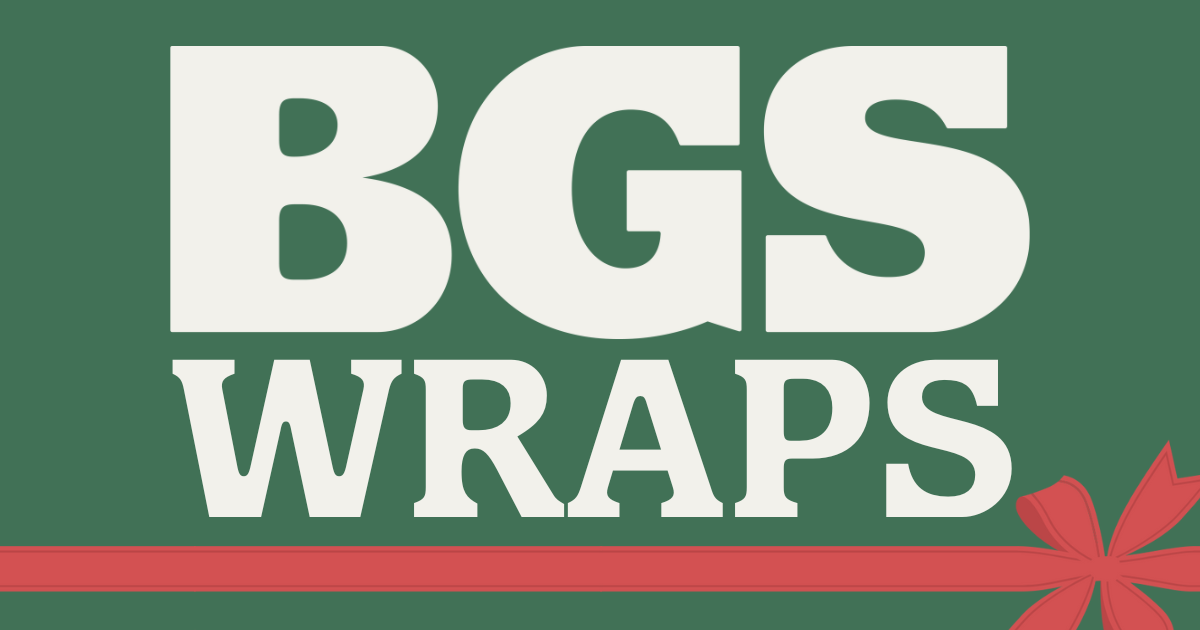This week our roundup of premieres and new music is a special, “Oops! All Bluegrass!” edition of the weekly series. But still with plenty of variety herein.
Kicking us off, Infamous Stringdusters fiddler Jeremy Garrett unveils “Fly Away to Your Love,” a driving and bluesy modern take on how love can take command of your life, drawing inspiration from Romeo and Juliet. Garrett’s labelmates, Montana-based bluegrass band the Lil Smokies, continue with the theme of love, romance, and sacrifice with “Lay it Down for Love” – because investing in love always pays off.
Guitarist Cameron Knowler showcases “Mule at the Wagon” an acoustic guitar trio number from his new album CRK, which releases today and text paints the beautiful – and stark – Yuma, Arizona, its surrounding states, deserts, and the plains. Plus, mandolinist and professor Joe K. Walsh launches his new album, Trust and Love, today so we’re highlighting a lovely and vibey instrumental, “Oatmeal,” that he appropriately wrote over breakfast.
Bluegrass legend, multi-instrumentalist picker and singer-songwriter Tim O’Brien announces his upcoming album, Paper Flowers, today as well. The lead track from the project, “Lonesome Armadillo,” was written with folk icon Tom Paxton and O’Brien’s partner Jan Fabricius, who features across the new album. It’s a funny tale of a backyard critter trap and a surprise armored four-legged prisoner. Meanwhile, supergroup Sister Sadie bring us a devastating and heartfelt song, “Let the Circle Be Broken,” about interrupting cycles of generational trauma and finding redemption in ourselves and support systems. Written by Sadies Deanie Richardson and Dani Flowers with in-demand songwriter and artist Erin Enderlin, the track is moving and deeply resonant.
Each week of new music is its own adventure, but this roundup feels particularly superlative. You know what we think– You Gotta Hear This!
Jeremy Garrett, “Fly Away to Your Love”
Artist: Jeremy Garrett
Hometown: Drake, Colorado
Song: “Fly Away to Your Love”
Album: Storm Mountain
Release Date: March 28, 2025 (single); June 27, 2025 (album)
Label: Americana Vibes
In Their Words: “When troubles may come, in any relationship, the idea is to persevere – to overcome with grace. The hope of love eternal, or at least a love that stands the test of time. And in the end, like Shakespeare’s famous Romeo and Juliet, if it can’t be, then there is no hope of anything better. So, will it command your life? Is dying in hopes to be with the one you love better than life itself without that someone? Fly away to your love is a modern take, written in an old-time way, encompassing that passion and story in a song.” – Jeremy Garrett
Track Credits:
Jeremy Garrett – Lead vocal, fiddle
Chris Luquette – Guitar
Ryan Cavanaugh – Banjo
Travis Anderson – Bass
Cameron Knowler, “Mule at the Wagon”
Artist: Cameron Knowler
Hometown: Yuma, Arizona
Song: “Mule at the Wagon”
Album: CRK
Release Date: April 4, 2025
Label: Worried Songs
In Their Words: “‘Bull at the Wagon’ is a fiddle tune I sourced from The Lewis Brothers, a great old New Mexico-via-Texas string band with a sweet tooth for rambunctiousness. I changed ‘bull’ to ‘mule’ because, well, I’ve had a few donkey encounters out in West Texas, not far from where the Lewises cut their four sides for the Victor label in 1929. It’s one of those titles that popped into my life at the damndest times – while playing tunes with Frank Fairfield in Los Angeles, performing at a border crossing party in Terlingua, Texas, and visiting with Norman Blake at his home in Rising Fawn, Georgia. To my ear, its melody moves past some of the stylized landscape found in American traditional music these days; maybe it’s the way the four chord asserts itself in the second part, or the way the five chord lands so starkly and dominantly in the third; this mix of quick and static passages is highly generative for arranging and improvising.
“I wanted to see what this tune would yield in a lilting, sort of pastoral setting, so I called my talented friends Jordan Tice and Robert Bowlin who graciously agreed to record it with me at The Tractor Shed in Goodlettsville, Tennessee. Jordan tuned to open G (capo 2), I played out of standard (capo 2), Robert in standard with no capo. Mr. Bowlin and I are playing our old Gibson J-35s and Jordan is using his Preston Thompson OM. The performance found on CRK is one of the first takes.” – Cameron Knowler
Track Credits:
Robert Bowlin – Guitar
Cameron Knowler – Guitar
Sean Sullivan – Engineer
Jordan Tice – Guitar, producer
The Lil Smokies, “Lay It Down for Love”
Artist: The Lil Smokies
Hometown: Montana
Song: “Lay It Down for Love”
Album: Break of the Tide
Release Date: April 4, 2025
Label: Americana Vibes
In Their Words: “The greatest honor of my life is to have spent it fully immersed in music. That’s not to say it hasn’t come without cost. Words can’t carry the weight of the sacrifices required, though I’ve enjoyed trying to explain. All I know is that the loss and doubt I’ve faced has given me a more beautiful life than I ever imagined when I set out on this path. I wouldn’t change a thing. ‘Lay it Down for Love’ was written in some of the darkest days of my life, when there was no evidence that my wagers would come back to me. Today I hear it as a reminder that those days come and go, but investing in love always pays off.” – “Rev,” Matthew Rieger
Track Credits:
Andy Dunnigan – Dobro, vocals
Matthew Rieger – Guitar, vocals
Jake Simpson – Fiddle, guitar, vocals
Jean Luc Davis – Bass
Sam Armstrong Zickefoose – Banjo
Tim O’Brien & Jan Fabricius, “Lonesome Armadillo”
Artist: Tim O’Brien & Jan Fabricius
Hometown: Nashville, Tennessee
Song: “Lonesome Armadillo”
Album: Paper Flowers
Release Date: June 6, 2025
Label: Howdy Skies
In Their Words: “There’s an awful lot of talk about migrants invading from the south, but nobody’s talking about armadillos. After we started trippin’ over little holes in our yard, Jan baited a raccoon trap, focused the security camera on it, and then we drove to Memphis to play a show. On the set break, we saw we’d caught the hard-shelled offender, but after the show we saw that he’d arched his back, bent the trap, and escaped. We told Tom Paxton about it the next week and he said, ‘Let’s tell his story.’
“Jan and I started weekly co-writing sessions with Tom in the spring of 2023 and twelve of the fifteen songs on our June 6th release, Paper Flowers, come from those Wednesday afternoon Zooms. It’s our first real collaborative project and a narrative of Jan’s and my life together runs through the record – from courtship to growing old together, with a road trip, the armadillo, and a granddaughter’s wedding in between.” – Tim O’Brien
Track Credits:
Larry Atamanuik – Drums
Mike Bub – Bass
Jan Fabricius – Mandolin, vocal, songwriting
Mike Rojas – Accordion
Justin Moses – Resophonic guitar
Tim O’Brien – Guitar, vocal, songwriting
Tom Paxton – Songwriting
Sister Sadie, “Let the Circle Be Broken”
Artist: Sister Sadie
Hometown: Nashville, Tennessee
Song: “Let The Circle Be Broken”
Release Date: April 4, 2025
In Their Words: “Dani Flowers, Erin Enderlin, and myself wrote ‘Let the Circle Be Broken’ right after my Dad passed away. He was an abusive man who verbally, emotionally, and sexually abused me for most of my 18 years living at home with him. When I confronted him as an adult, he said that it had been done to him as a child. This song is about that generational trauma and abuse that keeps getting passed down. The continuing of that trauma and abuse stops with me. It doesn’t go any further. It was such a healing and therapeutic experience to write this with Dani and Erin. The recording session for this was so emotional for me. I felt like I was talking to my Dad at the end during the instrumental fade. He was there and he heard me. That circle is officially now broken.” – Deanie Richardson, fiddle
“Deanie, Erin, and I wrote this song about generational trauma, which each of us have experienced different levels of. This song is about how we’ve decided that these cycles that have been repeated over and over in our families end with us. I was born into a family of some of the worst types of people to ever exist in this world and it is sometimes so hard to sit with the fact that you come from a line of people who are capable of doing such awful things to others — to you. While I can’t say the same for many of my family members, I can say for sure that my children will never experience from me what I experienced from my mother and what she experienced from hers and what she experienced from hers.” – Dani Flowers, vocals
“The song ‘Let The Circle Be Broken’ touches us all within this band because of its very personal nature. We feel it every time we perform it on stage. Deanie, Dani, and Erin wrote an incredible song that touches the audience. It’s not uncommon to look out and see tears streaming down people’s faces. As a creator, it’s very overwhelming.” – Gena Britt, banjo
“I resonate so deeply with the message of ‘Let The Circle Be Broken’ and I find myself a little emotional every time we play it. As someone who is actively working to heal my own generational family trauma, seeing the strong women around me working to do the same makes me feel hopeful, grateful and connected.” – Rainy Miatke, mandolin
“I think ‘Let The Circle Be Broken’ is a beautifully written song that a lot of people need to hear. It has a very important message about stopping generational messes and I cry almost every time we play it. I love Deanie so much and I know this song means so much to her, as it does to all of us. ‘Let The Circle Be Broken’ I think could mean a lot of different things to a lot of different people, too, and that’s the sign of a fantastic song. Dani Flowers, Deanie Richardson, and Erin Enderlin crafted an amazing piece of art.” – Jaelee Roberts, vocals
Track Credits:
Deanie Richardson – Fiddle
Gena Britt – Baritone banjo
Dani Flowers – Lead vocal
Jaelee Roberts – Harmony vocal
Mary Meyer – Mandolin, piano
Maddie Dalton – Upright bass, harmony vocal
Seth Taylor – Acoustic guitar, electric guitar
Dave Racine – Drums, percussion
Joe K. Walsh, “Oatmeal”
Artist: Joe K. Walsh
Hometown: Portland, Maine
Song: “Oatmeal”
Album: Trust and Love
Release Date: April 4, 2025
Label: Adhyâropa Records
In Their Words: “There are so many tunes that I love that are comprised of an entirely (or almost entirely) diatonic melody which has been harmonized with non-diatonic chords. Some favorite examples are ‘Moon River,’ ‘Someone to Watch Over Me,’ David Grisman’s ‘Dawg’s Waltz,’ Pat Metheny’s tune ‘James,’ and Matt Flinner’s tune ‘Fallen Star.’ I’ve taught a tune-writing ensemble at Berklee for many years, with the idea that each of member of the ensemble writes and presents a tune every week, and I like to use this idea as a prompt for the students. This tune was one I wrote over breakfast in response to this prompt one morning before heading to Boston for school.” – Joe K. Walsh
Track Credits:
Joe K. Walsh – Mandolin
Rich Hinman – Pedal steel
Zackariah Hickman – Bass
John Mailander – Fiddle
Dave Brophy – Drums
Photo Credit: Tim O’Brien and Jan Fabricius by Scott Simontacchi; Joe K. Walsh by Natalie Conn.
